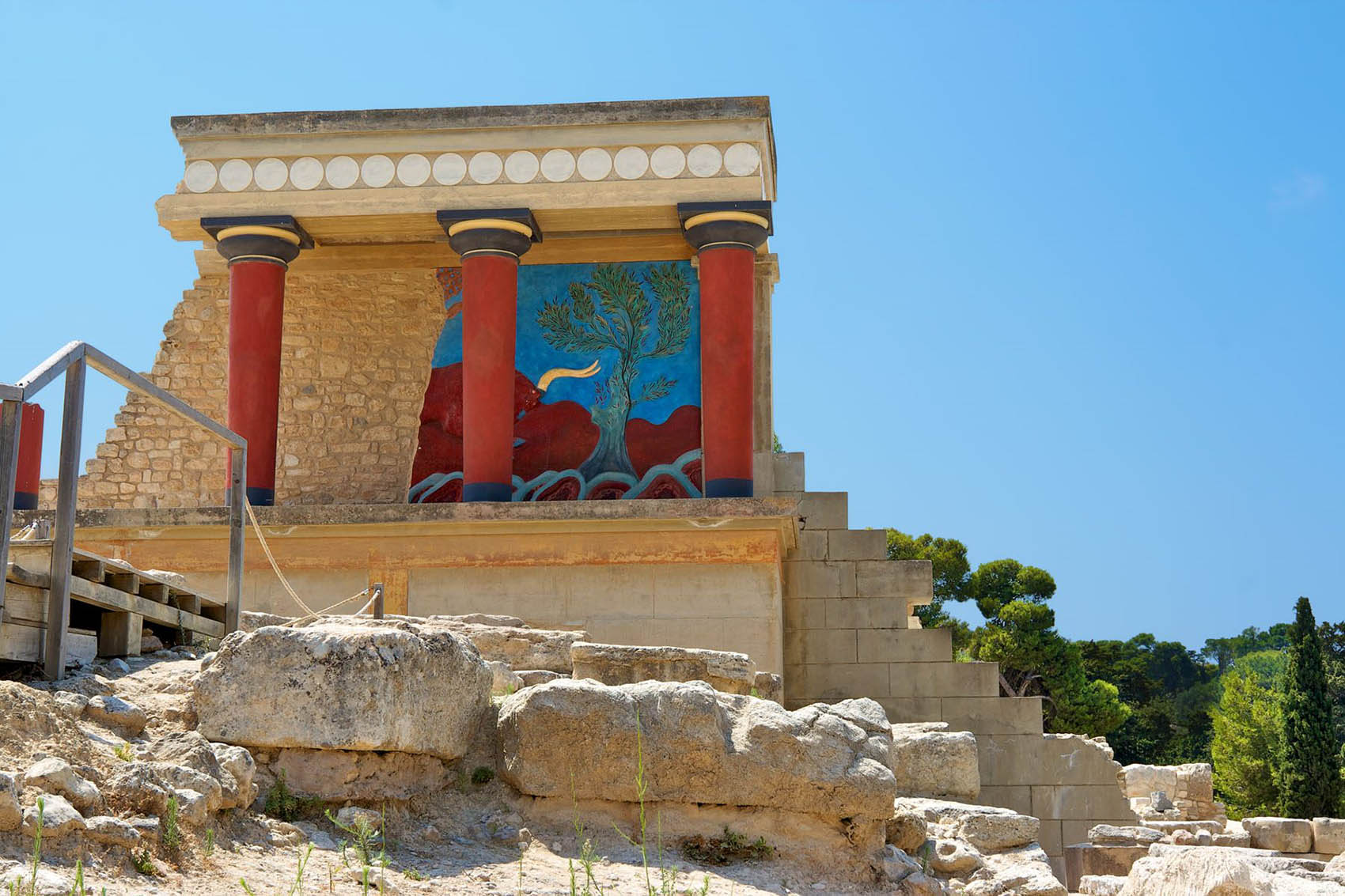Heraklion: a seaside city, full of life and history
The historic Candia, the city of Heraklion with its Venetian port is a modern capital with dozens of options in culture, accommodation, dining and entertainment. It is a city where you can enjoy the pleasures of today and the beauty of yesterday. Walk and savour the sights, like the impressive church of Agios Titos in the square, originally built by Byzantine emperor Nikephorus Phocas in 961.
Admire the Armeria (armory) next to St Titus, and The Loggia (City Hall) with its 82 metopes and beautiful arcades. Directly opposite you’ll find the lively Morosini (Leondaria) square with its lions’ head fountain. Moving on to Eleftherias Square, the striking feature here is an impressive building housing the Prefecture of Heraklion and the Law Courts.
The Venetians on the pier
At the entrance of Heraklion’s Venetian harbour, the Koules Fortress (also known as Castello Del Molo or Rocca al Mare) gazes proudly out to sea. It was built by the Venetians and took its final form between the years of 1523-1540. It has been repaired several times and during the Ottoman rule it served as a prison. Across the harbour the Venetian shipyards make for a romantic backdrop.
The walls of the old city: the threshold between past and present
Walking along the walls, you will see how beautiful this city looks from this vantage point. You’ll pause in small shady parks and admire the genius of the famous Venetian architect, Michele Sanmicheli, who designed the walls and bastions more than 400 years ago. The Venetian walls demarcating today’s old town were indeed an impressive feat of engineering for the time, making Heraklion the best-fortified city in the Mediterranean.
‘Mythical’ Knossos
The master craftsman Daedalus built the labyrinth for the mythical King Minos in order to isolate the Minotaur, a creature that was half man, half bull. Theseus, the son of the King of Athens, slew him and found his way out of the labyrinth with the help of Minos’ daughter, Ariadne. The most important centre of the Minoan civilisation and one of the most popular archaeological sites in Greece, it is just 5km from Heraklion.
It was the headquarters of King Minos and its complex architecture gave birth to the myth of the labyrinth. Thanks to the archaeologist Sir Arthur Evans’ excavation and sensitive restoration, it is now one of the most fascinating sites in Greece, where you can experience exactly what life was like inside the palace.
Admire the throne room, the heart of the palatial complex, which consists of the central court and the main chamber; the Processional Way decorated with frescoes, including the « Prince with the Lilies »; the Propylaea and the famous Bull’s Horns, one of the sacred symbols of Minoan religion, and the royal apartments that consist of the hall of « Double Axes » and the « Apartments of the Queen » with its ‘’Dolphins’’ mural. The Palace of Knossos flourished during the Minoan period (2000-1350 BC) and was the most important socioeconomic and religious centre of Crete.
Archaeological Museum: a ‘panorama’ of Minoan Crete
This famous museum is considered one of the most important museums in Europe. The exhibits include representative samples from all periods of Cretan history, covering a span of 5,500 years. You will admire the frescoes of « the Bull Leaper », the « Prince with the Lilies », the “Monkey Saffron Collector », the « Blue Ladies » and especially “La Parisienne’’. The new wing of the museum opened in August 2013, with exhibits ranging from the Geometric, Archaic and Classical periods as well as the Roman era.
Source: https://www.discovergreece.com/


